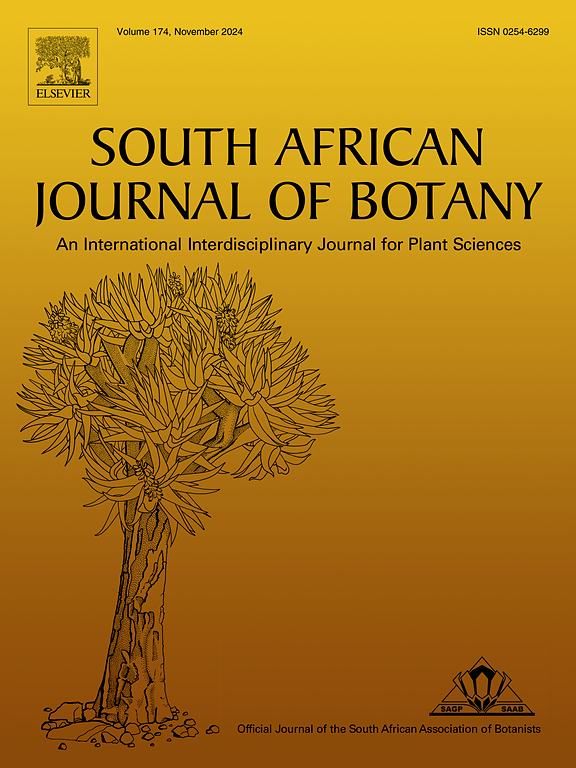台湾特有濒危物种baytopianum (Asteraceae)的体外繁殖及抗氧化和抗菌活性研究
IF 2.7
3区 生物学
Q2 PLANT SCIENCES
引用次数: 0
摘要
在Murashige和Skoog基础培养基(MS)上,建立了一种生长在本文章由计算机程序翻译,如有差异,请以英文原文为准。

In vitro propagation, antioxidant and antimicrobial activities of Tripleurospermum baytopianum (Asteraceae): a threatened endemic species in Türkiye
In this study, a rapid and efficient in vitro propagation protocol has been established for threatened endemic species Tripleurospermum baytopianum (Asteraceae) growing naturally in Türkiye in Murashige and Skoog basal medium (MS) using nodal explants. The achenes evaluated as initiation material reached the highest germination success of 76.7 % in MS medium supplemented with 1.0 mg L-1 gibberellic acid (GA3). MS medium containing 1.0 mg L-1 6-BA and 0.1 mg L-1 IBA was found to be the best medium to stimulate and sustain the new shoot formation (8.3 shoot number per explant). This medium was also more effective in terms of callus formation, fresh and dry weight parameters per explant with 87.8 %, 1.74 g and 0.111 g, respectively. MS basal medium enriched with 0.5 mg L-1 2iP plus 0.1 mg L-1 NAA achieved 74.7 mm shoot length per explant was quite remarkable. Rooting success was achieved between 86.7 % and 100 % in all rooting media. The acclimatization process of the plantlets was carried out successfully with 75 % survival rates in botanical garden. Cytogenetic analysis revealed that propagated plants have the same chromosome number (2n = 2x = 18) with their mother plants in natural population, indicating genetic stability. Screening of the antioxidant (DPPH scavenging) and antimicrobial (disc diffusion) activities of ethanolic extracts of in vitro propagated plants were also carried out and compared with that of the wild-grown plants (mother plants). The biochemical tests showed that in vitro propagated plants and the mother plants have almost the same antioxidant activities, indicating metabolic stability. On the other hand, although statistically the highest antimicrobial activity was in sample 20 and sample 1 (taken from nature), it can be said that the high amount of cytokinin relatively increases the antimicrobial activity. The study signifies a notable in vitro production technique for T. baytopianum and provides an important comparison method of the antioxidant and antimicrobial potentials of in vitro derived shoots and mother plants of threatened endemic T. baytopianum.
求助全文
通过发布文献求助,成功后即可免费获取论文全文。
去求助
来源期刊

South African Journal of Botany
生物-植物科学
CiteScore
5.20
自引率
9.70%
发文量
709
审稿时长
61 days
期刊介绍:
The South African Journal of Botany publishes original papers that deal with the classification, biodiversity, morphology, physiology, molecular biology, ecology, biotechnology, ethnobotany and other botanically related aspects of species that are of importance to southern Africa. Manuscripts dealing with significant new findings on other species of the world and general botanical principles will also be considered and are encouraged.
 求助内容:
求助内容: 应助结果提醒方式:
应助结果提醒方式:


